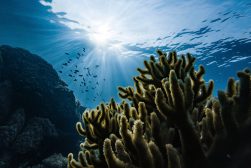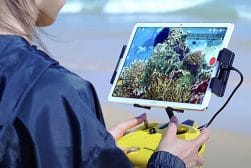
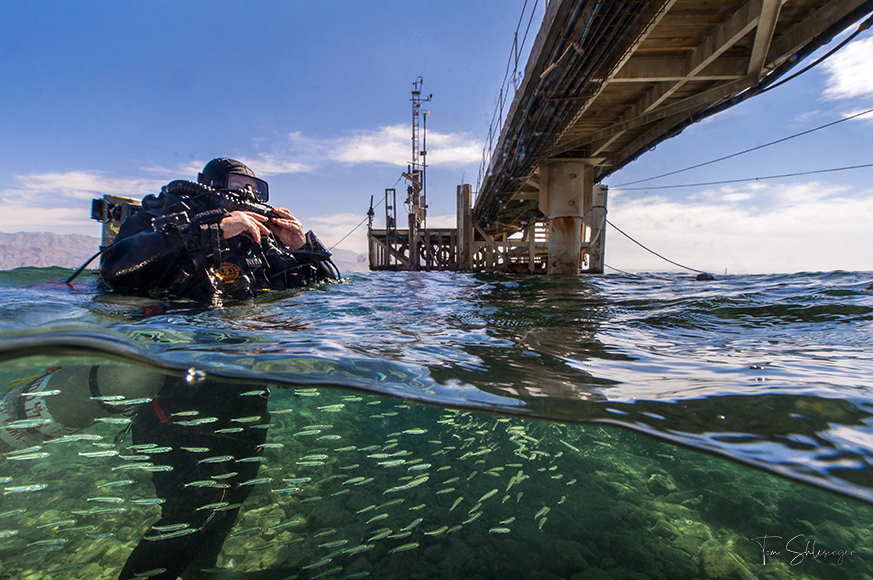
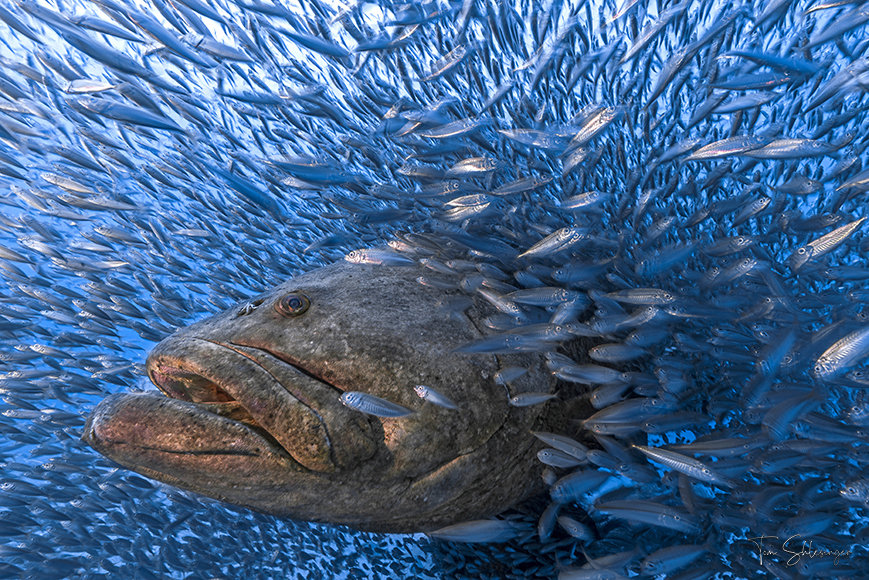

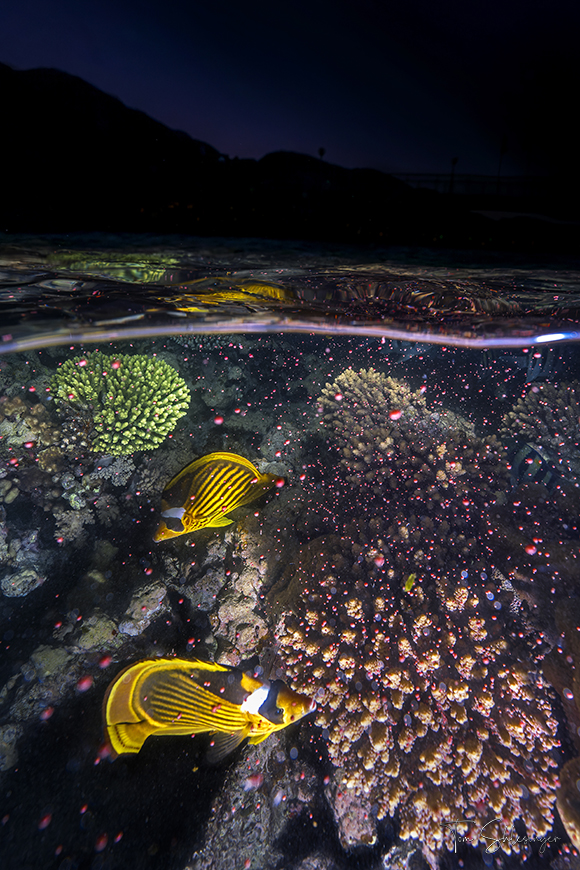
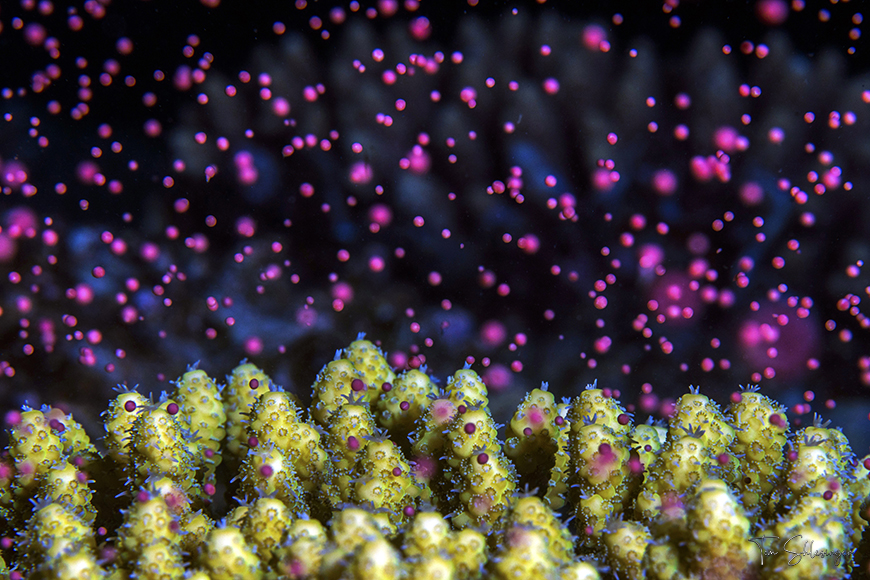
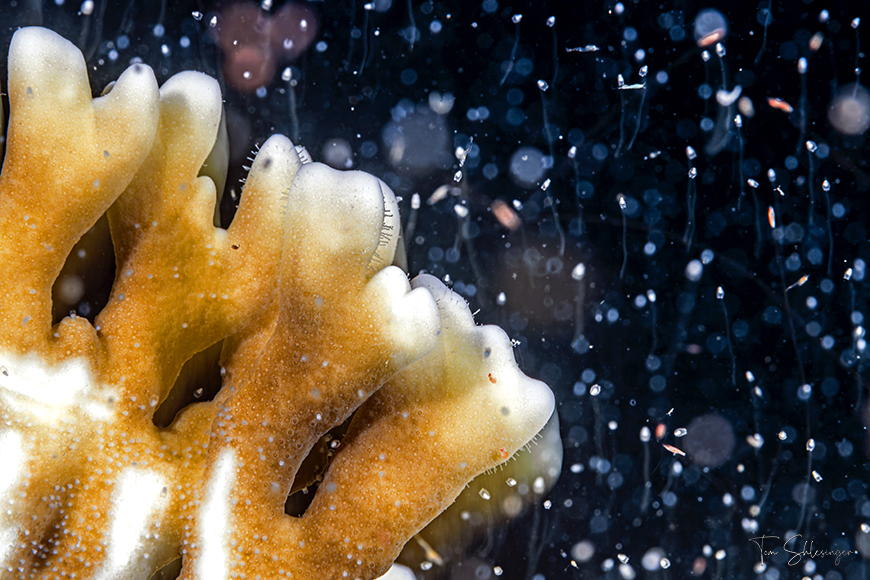
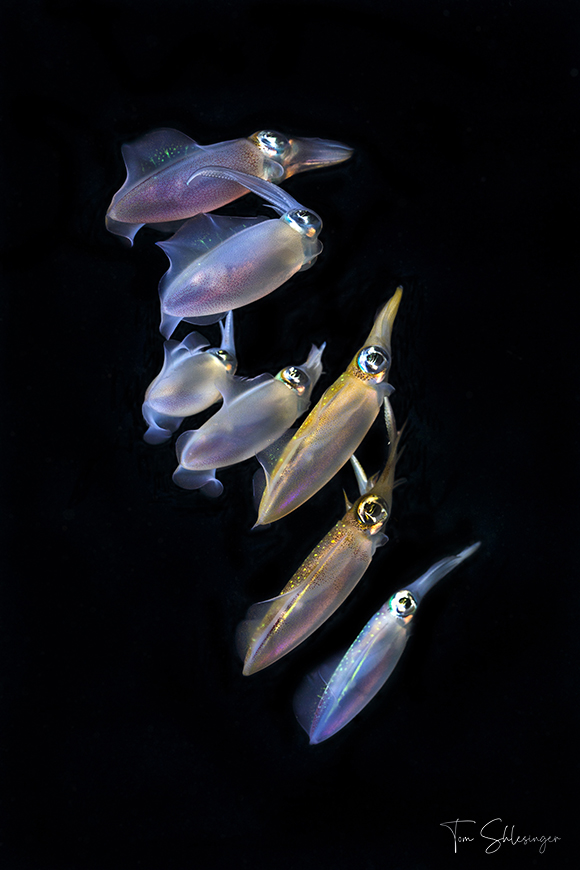



Tom Shlesinger
Marine & Underwater | Last Updated: August 29, 2023
For as long as I can remember, I have been attracted to the sea and its mysteries. I grew up on the shores of the Red Sea in Israel, where I did my first dive in 1988 at the age of six.
Ever since then, I have been fascinated with the diversity of life forms in the sea and their intriguing behavior, functions, colors, shapes, and patterns.
Today, I am a marine ecologist (Ph.D.), an underwater photographer, and a naturalist. Most of my photographic and scientific journeys either focus on or are intertwined with discovering unique moments of little-known behavioral and reproductive phenomena of corals and other coral reef dwellers.
I have always had a passion for visual arts. Still, my first step into the world of photography was back in 2004, when I started working in a local studio and photo development lab in my hometown Eilat, Israel.
Although I was already an avid diver and later worked as a commercial diver, I was still not into underwater photography. In the sea, I preferred to be more ‘present’ in the moment and experience it rather than being behind a camera.
It was years later, when I started my academic career, that I thought about merging two of my greatest passions, photography and the wonders of the coral reef. I started using and developing different photography techniques to study and monitor coral-reef ecosystems.
My turning point as an underwater photographer was in the summer of 2015. At that time, my Ph.D. research on coral reproduction, a fascinating phenomenon that largely happens at night, had taken me underwater every night for three months when corals in the Red Sea were spawning.
I embarked on a scientific-documentary project studying the nightlife and unique reproductive phenomena of corals and other coral reef dwellers in the Red Sea. During some of these nights, I spent as much as six hours per night silently waiting for and observing the unique and unfamiliar life around me.
As part of this project, between 2015 and 2019, I spent three hundred nights underwater during the major reproduction season of corals and other reef-associated animals.
I snorkeled and free-dived for hours every night to document the nocturnal behavior and build a calendar of the reproduction of corals and other coral-reef dwellers.
The unique aesthetic sensation of witnessing coral spawning made me realize that I needed to capture these moments in the best and most artistic way possible.
I started by taking a compact camera underwater on my work dives, but I quickly moved to a DSLR. Being a traditional fan of Nikon, I started working with a Nikon D90 in a Hugyfot housing.
When Sony started to revolutionize the digital photography world with their full-frame mirrorless cameras, I happily made the transition to a Sony system and never looked back.
Sony α7R Mark III – I fell in love with Sony ever since getting this camera. There is much to like about it with its 42 MP full-frame sensor, great image stabilization, 4k video, superb performance in low-light conditions, and extremely high ISO.
When it was just released, it was definitely a game-changer, offering one of the best options in the market as an all-in-one camera. I am in the process of upgrading my underwater system to a Sony α1 with its remarkable 50 MP sensor, high speed, and 8k video capabilities.
I am using a Nauticam Housing with a 45o viewfinder. This is one of the most robust and reliable housings, which includes very comfortable access and control over all buttons, wheels, and features of the camera.
I mostly use the two following lenses for shooting underwater:
Sony FE 16-35mm f/2.8 GM – this is a perfect lens to capture either large reef scape scenes or a wide-angle shot of any object from a short distance. This lens produces beautiful, sharp, and crisp images.
Sony FE 90mm F2.8 macro G – this is my preferred lens for any macro subject or an occasional portrait of some marine critters.
Another key component when shooting underwater is a glass dome port that you need to match with the lens. This is effectively like having another lens, and without investing in an optically superior port, it can lead to disappointing results.
Nauticam 230 mm Glass Dome Port – I most commonly use this dome port for my wide-angle photography. Still, when I prefer my underwater system to be smaller, lighter, and with less drag in the water, I occasionally use my older Nauticam 180 mm Glass Wide Angle Port.
Retra Flash Pro X – I absolutely love everything about these flashes. The light output, beam spread, power, and variety of diffusers are simply brilliant. I often use two of these and have tried many other strobes in the past, but none come close to these.
The controls are super comfortable, and this product is just one of the most durable and reliable flashes I have worked with so far. Just a beautifully designed underwater flash.
For my macro photography, I am also using a Marelux Smart Optical Flash Tube (SOFT).
As video lights, I am using both a Kraken Solar Flare Mini 8000 and a Kraken Hydra 3500.
I like Manfrotto bags, and I am currently using a Manfrotto Street Camera Backpack a Manfrotto Laptop Backpack and a Manfrotto Pro Light Reloader Switch-55 carry-on camera roller bag. I find these bags to be durable and very comfortable, and I can get a lot of gear into them.
My post-processing pipeline usually includes working in Adobe Lightroom and then moving to Adobe Photoshop for occasional more in-depth fine-tuning.
I recently started to pass some of my RAW images through DxO PureRAW2 software and was quite amazed by the results, especially in some noisy, low-light images.
As a coral-reef scientist, I bring the spotlight to the backbone of the underwater tropical world, the stony corals. They are the engineers, architects, and artists that build and maintain the complex reef structures and breathe life into them.
With my photography, I aim to tell some of their natural-history stories and expose the incredible beauty alongside their conflicting fragility and resilience while raising awareness of the threats they are facing.
Coral reefs are among the most diverse and productive ecosystems on our planet. They not only shelter and provide food to the denizens of the deep but generously feed and support humans.
We, in turn, have adopted lifestyles that endanger their very existence. We pollute, overfish, and release gases into the atmosphere that are warming the oceans to temperatures that corals are no longer able to tolerate.
Without the reef-building corals, the entire hyper-diverse ecosystem that a coral reef creates will quickly collapse.
Therefore, each one of us must think about what we can do to reduce our carbon footprint so the natural ecosystems which we are a part of and also depend on will have a fighting chance to persist.
My own website is under construction, but you can read more about my work below.

Check out these 8 essential tools to help you succeed as a professional photographer.
Includes limited-time discounts.






